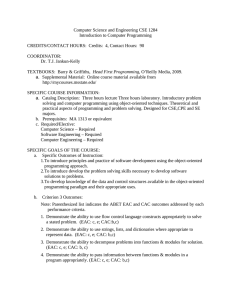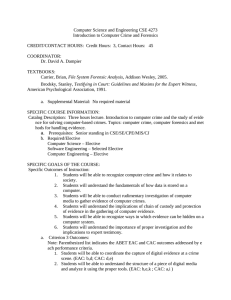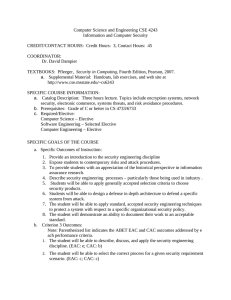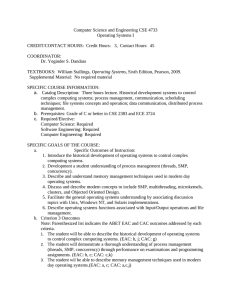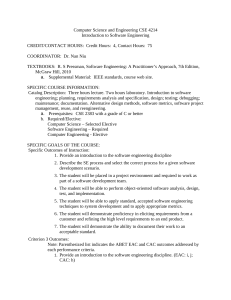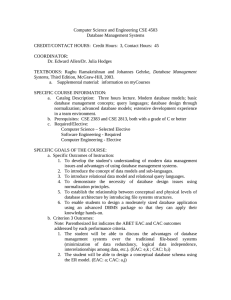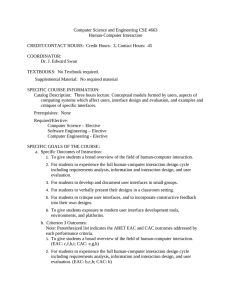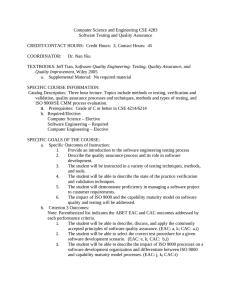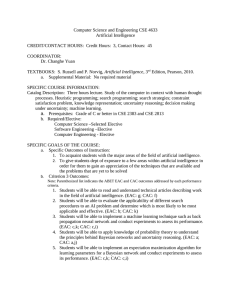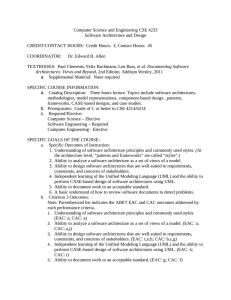Computer Science and Engineering CSE 4153 Data Communications and Computer Networks
advertisement
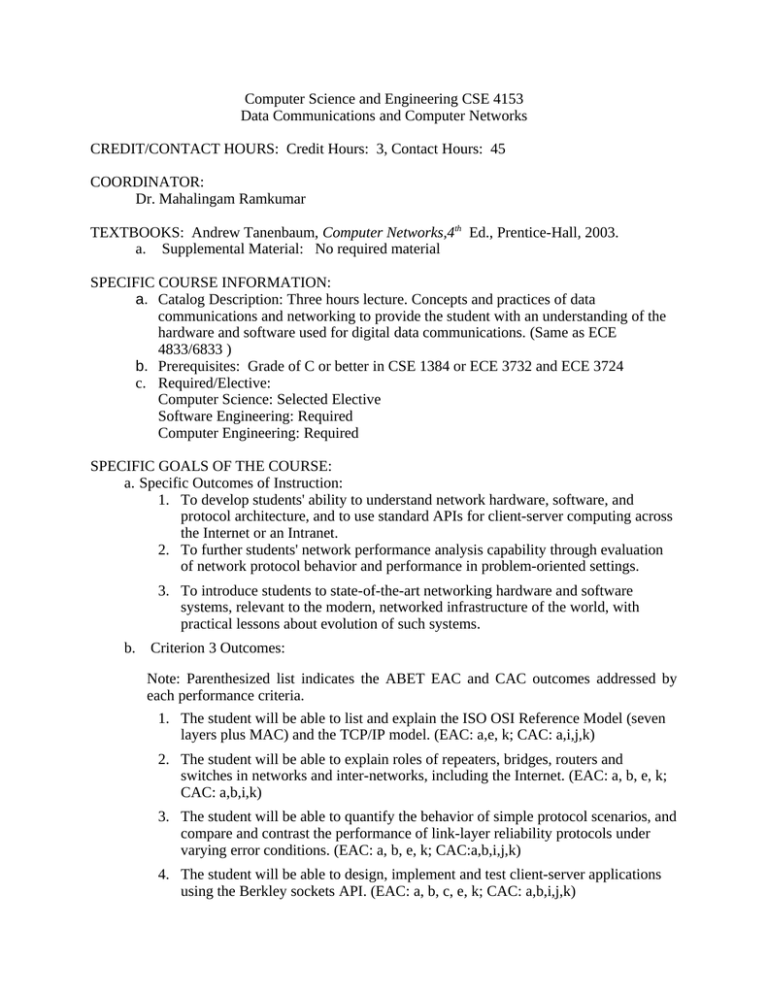
Computer Science and Engineering CSE 4153 Data Communications and Computer Networks CREDIT/CONTACT HOURS: Credit Hours: 3, Contact Hours: 45 COORDINATOR: Dr. Mahalingam Ramkumar TEXTBOOKS: Andrew Tanenbaum, Computer Networks,4th Ed., Prentice-Hall, 2003. a. Supplemental Material: No required material SPECIFIC COURSE INFORMATION: a. Catalog Description: Three hours lecture. Concepts and practices of data communications and networking to provide the student with an understanding of the hardware and software used for digital data communications. (Same as ECE 4833/6833 ) b. Prerequisites: Grade of C or better in CSE 1384 or ECE 3732 and ECE 3724 c. Required/Elective: Computer Science: Selected Elective Software Engineering: Required Computer Engineering: Required SPECIFIC GOALS OF THE COURSE: a. Specific Outcomes of Instruction: 1. To develop students' ability to understand network hardware, software, and protocol architecture, and to use standard APIs for client-server computing across the Internet or an Intranet. 2. To further students' network performance analysis capability through evaluation of network protocol behavior and performance in problem-oriented settings. 3. To introduce students to state-of-the-art networking hardware and software systems, relevant to the modern, networked infrastructure of the world, with practical lessons about evolution of such systems. b. Criterion 3 Outcomes: Note: Parenthesized list indicates the ABET EAC and CAC outcomes addressed by each performance criteria. 1. The student will be able to list and explain the ISO OSI Reference Model (seven layers plus MAC) and the TCP/IP model. (EAC: a,e, k; CAC: a,i,j,k) 2. The student will be able to explain roles of repeaters, bridges, routers and switches in networks and inter-networks, including the Internet. (EAC: a, b, e, k; CAC: a,b,i,k) 3. The student will be able to quantify the behavior of simple protocol scenarios, and compare and contrast the performance of link-layer reliability protocols under varying error conditions. (EAC: a, b, e, k; CAC:a,b,i,j,k) 4. The student will be able to design, implement and test client-server applications using the Berkley sockets API. (EAC: a, b, c, e, k; CAC: a,b,i,j,k) 5. The student will be familiar with the distinctive roles of network hardware, software, and protocols in practical systems, and how LANs and MANs are composed to form the Internet. (EAC: a, b, e, k; CAC: a,b,g,h,i,j,k) TOPICS COVERED: (Number of class hrs) 1. Introductory material – overview of networks (layers, uses, types of networks, protocols). 3 2. Methodology for network design/construction - ISO OSI seven-layer model, separation of concerns, LANS, MANS, WANS, and how networks are composed. 5 3. Qualitative design issues – naming, multiplexing, de-multiplexing, diversity of network connectivity, compatibility, data formatting, frame formats and encoding, alignment. 2 4. Quantitative design issues – latency, bandwidth, network capacity, error detection, link-layer reliability protocols. 6 5. Physical layer and data-link layer, composition of Ethernet segments, Medium access control protocols (ALOHA, CSMA, CSMA-CA, CSMA-CD) 5 6. Network topologies: metrics (diameter, connectivity, cost, bisection width, bandwidth), stars, buses, store-and-forward, cut-through, packet-switched. 2 7. Topological devices: routers, switches, bridges, repeaters; cut-through vs. store/forward. 2 8. Network layer: DV and LS routing, addressing, congestion control, NATs 5 9. Protocols: go-back-N, selective repeat, TCP/IP, UDP/IP, and related protocols. 8 10. The Berkeley sockets API, client-server and peer distributed application, programming strategies, and examples. 4 11. Exams 3

